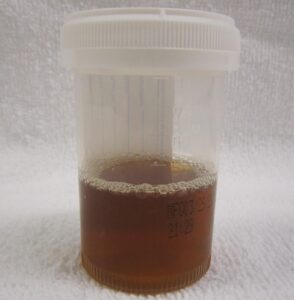
The Importance of Halitosis as a Sign of Liver Disorder
Liver disease is a growing concern globally, with factors like alcohol abuse, viral hepatitis, and obesity contributing significantly to its prevalence. Detecting liver diseases early is crucial for effective treatment and prevention of severe complications like Liver Cirrhosis. While traditional diagnostic methods such as blood tests and biopsies have limitations, the emerging use of breath analysis as a biomarker shows promise in revolutionizing early detection techniques. This article delves into how bad breath can serve as an indicator of liver disease, exploring its significance, accompanying symptoms of fatty liver, treatment options, and the future implications of utilizing breath analysis in liver health assessment.
How is Breath An Indicator of Liver Disease?
Understanding the Link between Bad Breath and Liver Health
When it comes to assessing our overall health, our body often provides subtle cues that something may be amiss. Bad breath, also known as halitosis, can sometimes indicate underlying health issues, including liver abnormalities. The liver plays a vital role in detoxifying the body and regulating metabolic processes. In cases of liver dysfunction or disease, certain volatile organic compounds (VOCs) are released into the bloodstream and eventually exhaled through the breath. These compounds can contribute to the distinct odor associated with bad breath in individuals with liver conditions.
To leverage this connection between breath and liver health, researchers have been exploring the potential of breath analysis as a non-invasive and cost-effective method for detecting liver diseases at an early stage. By identifying specific VOC patterns in the breath, scientists aim to develop diagnostic tools that can accurately pinpoint liver abnormalities before they progress to more serious complications.
Advantages of Breath Analysis over Traditional Diagnostic Methods
Unlike conventional diagnostic procedures such as blood tests and biopsies, which can be invasive, time-consuming, and costly, breath analysis offers several advantages in the realm of liver disease detection. One key benefit is the non-invasiveness of breath sampling, making it a more comfortable and convenient option for patients. Additionally, breath analysis is rapid, providing quick results that can facilitate prompt intervention and monitoring of liver health status.
Moreover, the use of breath as a diagnostic tool holds the potential for real-time monitoring of liver function, allowing healthcare providers to track changes in VOC profiles over time and tailor treatment plans accordingly. By harnessing the power of breath analysis, medical professionals can enhance their ability to detect liver diseases early, improve patient outcomes, and ultimately reduce the burden of liver-related morbidity and mortality.
| Advantages of Breath Analysis in Liver Disease Detection |
|---|
| – Non-invasive and comfortable for patients |
| – Rapid results for prompt intervention |
| – Real-time monitoring of liver function |
| – Potential for personalized treatment approaches |

Other Symptoms Of Fatty Liver Accompanied By Bad Breath
Recognizing the Signs of Fatty Liver Disease
Fatty liver disease, characterized by the accumulation of fat in liver cells, is a common condition that can lead to liver inflammation and impair organ function if left untreated. Alongside bad breath, individuals with fatty liver disease may experience a range of symptoms that warrant attention and further evaluation. These symptoms can vary in severity and may include:
- Abdominal Discomfort: Patients with fatty liver disease may report feelings of fullness, bloating, or discomfort in the abdominal region, particularly after meals. This discomfort can stem from liver enlargement or inflammation caused by excess fat deposition;
- Fatigue and Weakness: Chronic fatigue and generalized weakness are common complaints among individuals with fatty liver disease. The liver’s compromised ability to perform essential functions like energy metabolism and toxin removal can contribute to feelings of tiredness and reduced stamina;
- Jaundice: In advanced stages of fatty liver disease, jaundice—a yellowing of the skin and eyes—may occur due to impaired bilirubin processing by the liver. Jaundice serves as a visible indicator of liver dysfunction and should prompt immediate medical attention.
Interplay Between Bad Breath and Fatty Liver Disease
Bad breath, often overlooked as a minor nuisance, can serve as a valuable clue in the early identification of fatty liver disease. The presence of foul-smelling breath alongside other symptoms like abdominal discomfort, fatigue, and jaundice should raise suspicion of underlying liver abnormalities. Halitosis in individuals with fatty liver disease may result from the release of specific VOCs associated with liver dysfunction, highlighting the interconnectedness of systemic health indicators.
By recognizing bad breath as a potential sign of fatty liver disease, healthcare providers can adopt a comprehensive approach to diagnosis and management, incorporating breath analysis alongside clinical assessments and imaging studies. Early detection of fatty liver disease allows for timely interventions, lifestyle modifications, and targeted therapies aimed at preserving liver function and preventing disease progression.
| Symptoms of Fatty Liver Disease Accompanied by Bad Breath |
|---|
| – Abdominal discomfort after meals |
| – Persistent fatigue and weakness |
| – Development of jaundice |
How Can You Treat The Condition?
In the management of fatty liver disease, lifestyle modifications play a pivotal role in improving liver health and reducing disease progression. Adopting healthy habits and making sustainable changes to dietary and exercise routines can positively impact liver function and overall well-being. Key strategies for treating fatty liver disease include:
- Healthy Diet: Embracing a balanced diet rich in fruits, vegetables, whole grains, and lean proteins can help reduce liver fat accumulation and promote weight loss. Limiting consumption of sugary foods, saturated fats, and processed snacks is essential for supporting liver function and metabolic balance;
- Regular Exercise: Engaging in regular physical activity, such as aerobic exercises, strength training, or yoga, can aid in weight management, insulin sensitivity, and liver fat reduction. Physical exercise contributes to overall health improvement and enhances metabolic processes crucial for liver function;
- Weight Management: Maintaining a healthy weight through a combination of diet and exercise is paramount for individuals with fatty liver disease. Weight loss, even modest amounts, can lead to significant improvements in liver health markers and reduce the risk of disease progression.
Conclusion
In conclusion, the integration of breath analysis as a diagnostic tool for liver disease represents a significant advancement in the field of healthcare. By recognizing the link between bad breath and liver health, researchers and clinicians can leverage breath biomarkers to enhance early detection, monitoring, and management of liver conditions. The use of breath analysis offers numerous advantages over traditional diagnostic methods, providing a non-invasive, rapid, and cost-effective approach to assessing liver function.

